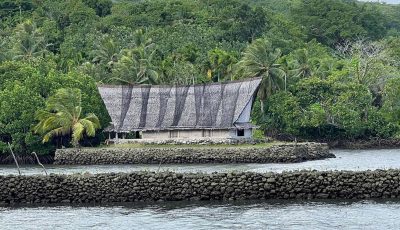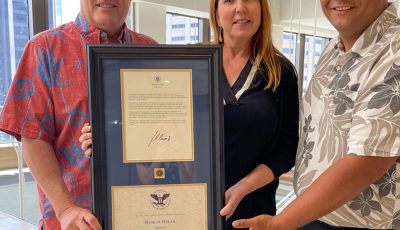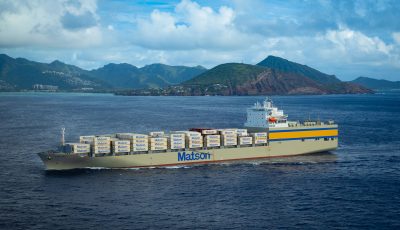NOAA explores deepwater habitats in MITT
»NOAA Fisheries to share live video feed from NOAA Ship Okeanos Explorer
HONOLULU—Are you curious about deepwater habitat or marine animals in the Pacific Ocean? Fortunately, National Oceanographic and Atmospheric Administration has an unmanned remotely operated vehicle that can dive to 6,000 meters or 3.7 miles deep. The dives will be broadcasted live from the seafloor, allowing anyone with internet access to witness remote protected areas and the unique natural and cultural resources within them.
On April 20, NOAA and partners will embark on a three-cruise expedition aboard NOAA Ship Okeanos Explorer to explore unknown and little studied areas in and around the Marianas Trench Marine National Monument (MTMNM) and the Commonwealth of the Northern Mariana Islands (CNMI).
Throughout the expedition, the at-sea and shore-based science teams will work together to make some of the first deepwater scientific observations in the region. The team expects to explore bottomfish habitats, new hydrothermal vent sites, mud volcanoes, deep-sea coral and sponge communities, seamounts, as well as subduction zone and trench areas.
“The data and images collected by the Okeanos Explorer expedition team will greatly improve our understanding of the diversity and distribution of deepwater habitats in the Commonwealth of the Northern Mariana Islands and the Marianas Trench Marine National Monument,” stated Samantha Brooke, NMFS Marine National Monuments Program Manager.
The Okeanos Explorer is the first and only federal vessel with a mission to explore the unknown ocean. Using deep water mapping sonars and a fully integrated dual-body ROV, missions are conducted to systematically explore poorly known areas of the deep ocean identified as priority by the ocean science and management community. Throughout operations, telepresence is used to engage scientists and managers from onshore locations in real-time so they can collaborate and help guide operations in real-time. Simultaneously, the thousands of general public viewers can tune in online to watch and listen to the ongoing exploration. High definition video feeds of round-the-clock operations, including ROV dives, will be streamed live online from April through July 2016.
The first cruise leg runs from April 20 through May 11 and will conduct 24-hour operations including daytime ROV dives and overnight mapping. Dive sites are expected to include hydrothermal vent sites and sites of interest to fisheries, including deep-sea coral and bottom fish habitats in the southern half of the CNMI and MTMNM.
The second cruise runs from May 20 through June 11 and will focus on mapping in the northern half of the the MTMNM and CNMI Exclusive Economic Zone. Mapping priorities will include previously unmapped areas, trench/subduction zone areas, and areas likely to host mud volcanoes.
The last cruise runs from June 17 through July 10 and also includes daytime ROV dives and overnight mapping operations in the northern half of the CNMI and MTMNM.
The expedition is part of a three-year foundational science effort focused on deepwater areas of U.S. marine protected areas in the central and western Pacific. It provides publicly accessible baseline data to spur further exploration, research, and management activities.
NOAA’s mission is to understand and predict changes in the Earth’s environment, from the depths of the ocean to the surface of the sun, and to conserve and manage our coastal and marine resources. Join us on Facebook, Twitter, Instagram and our other social media channels.



























